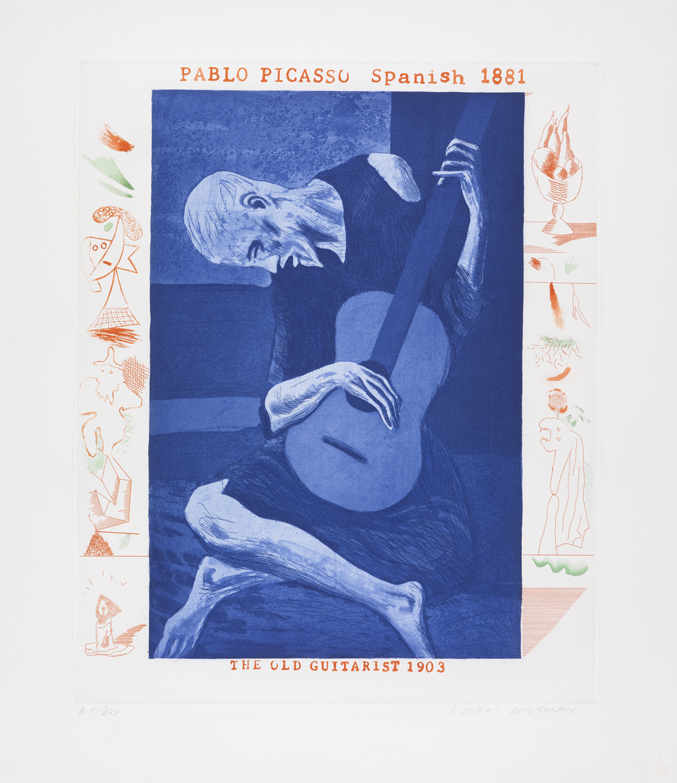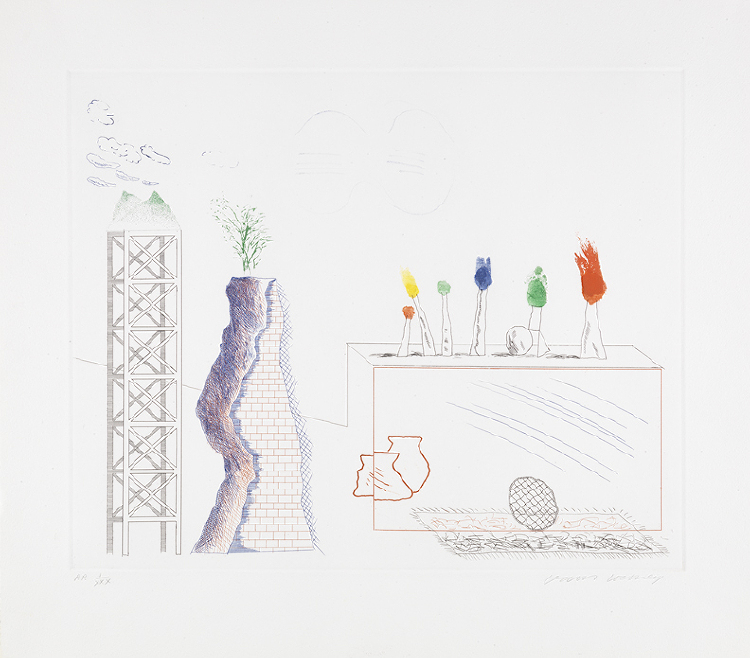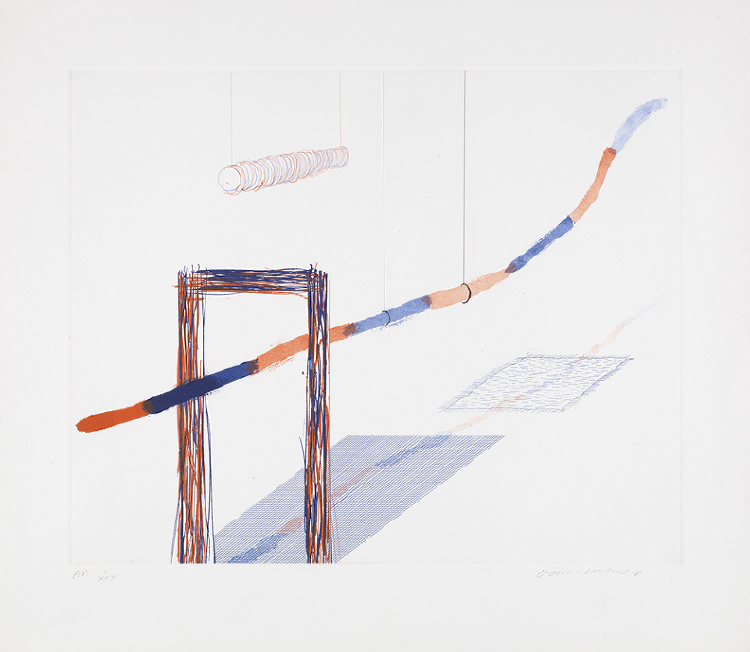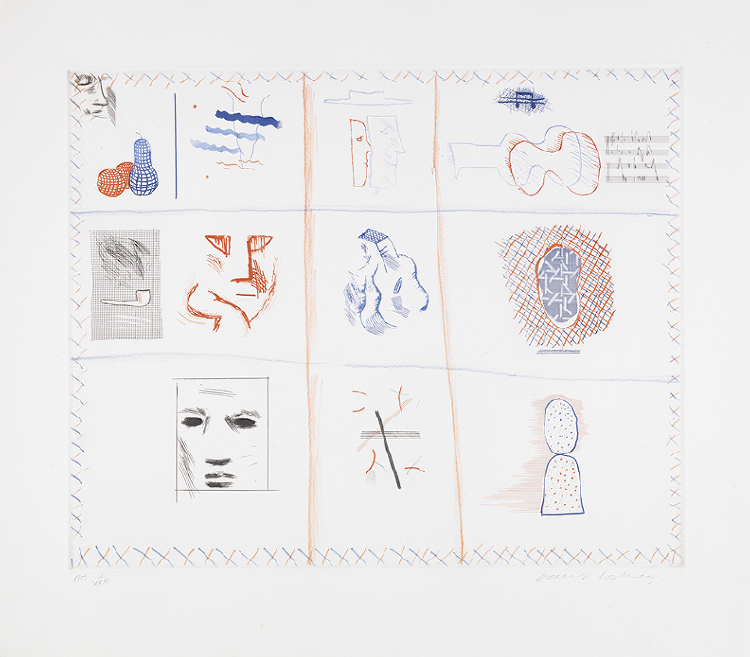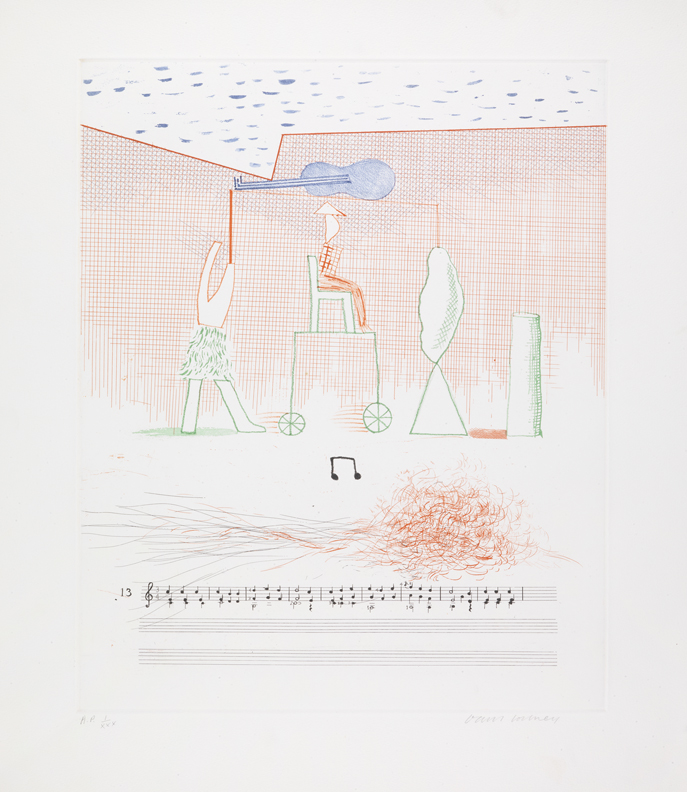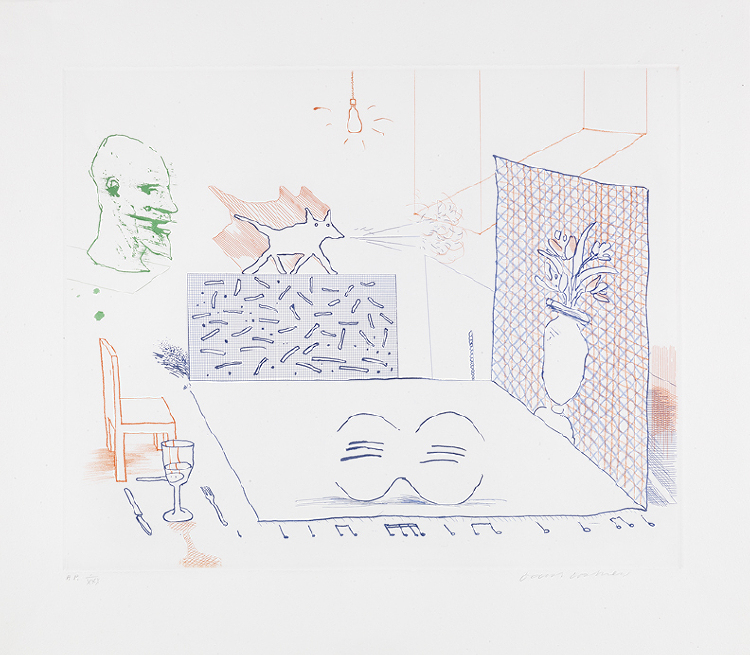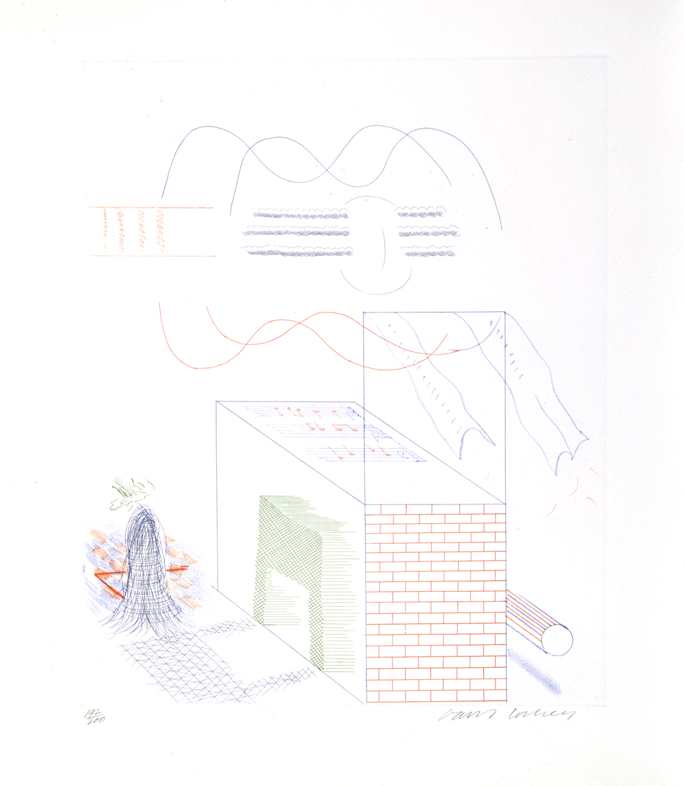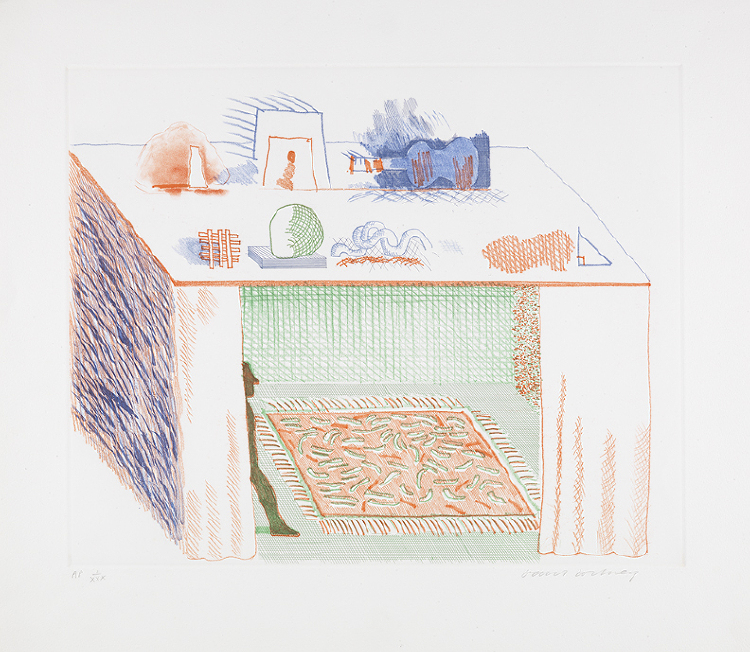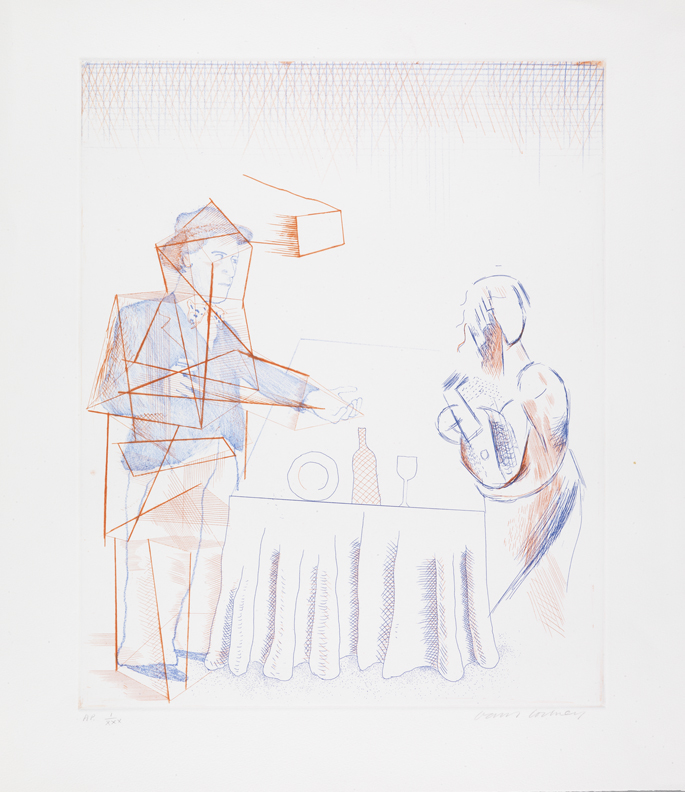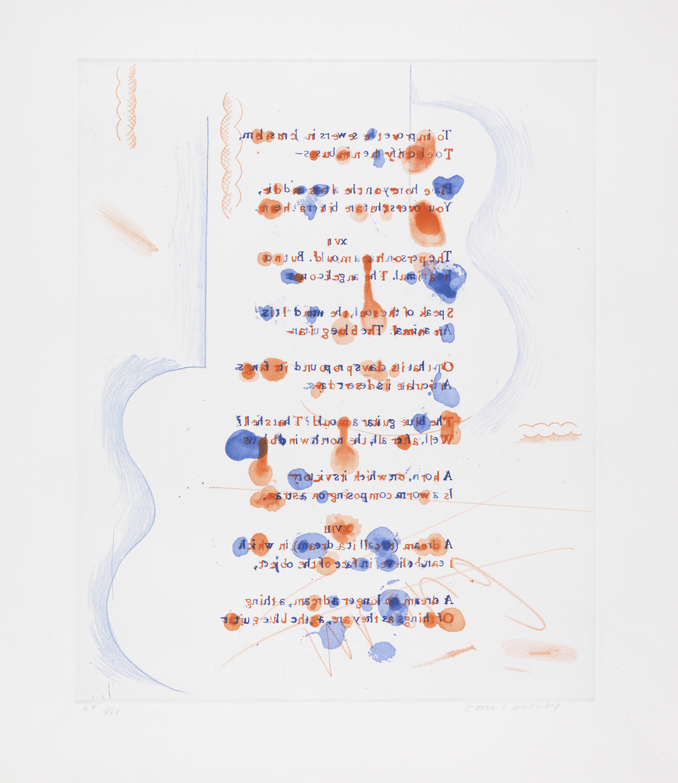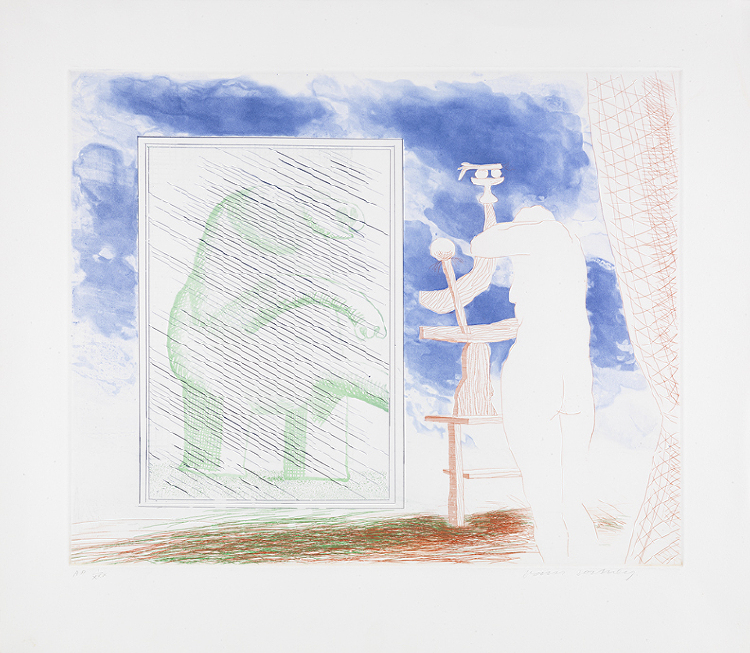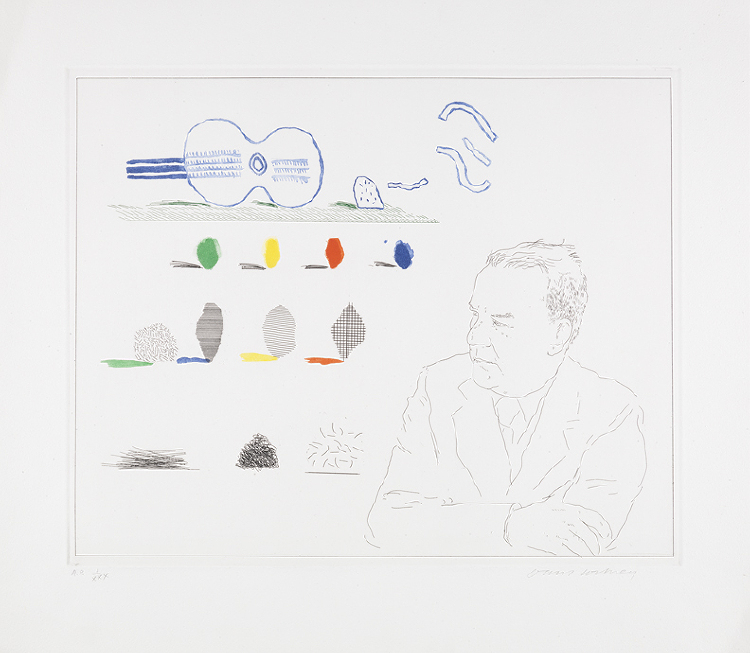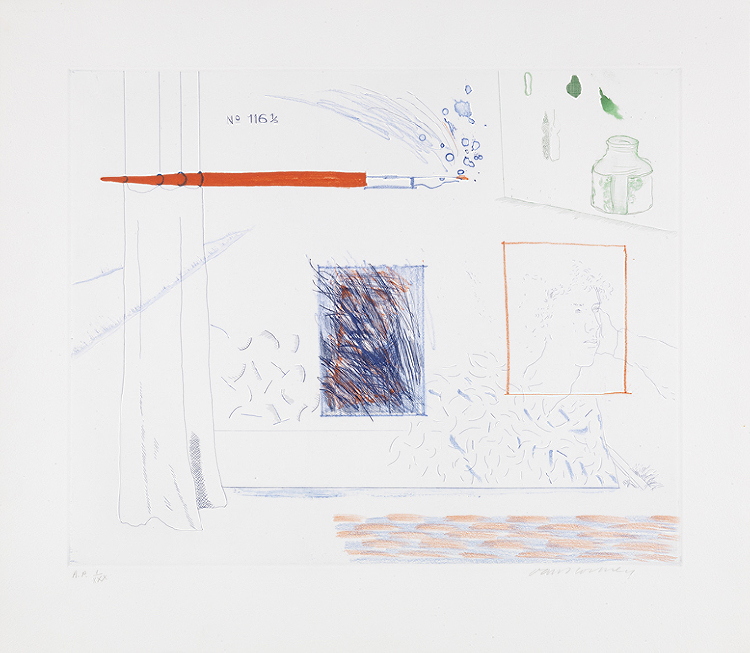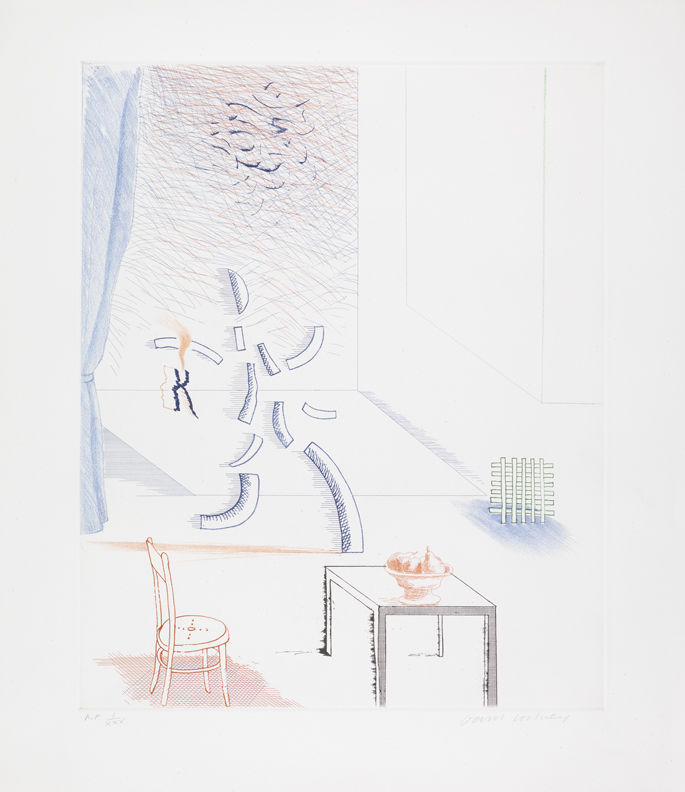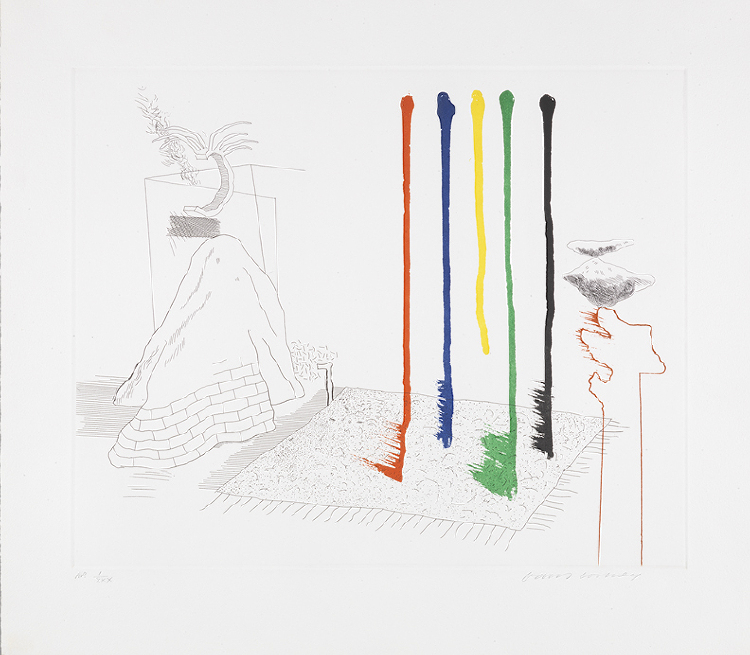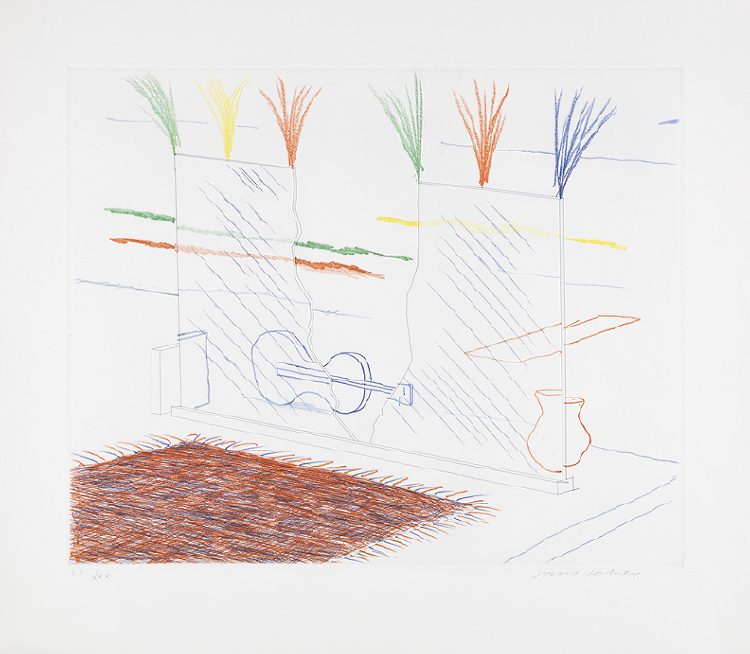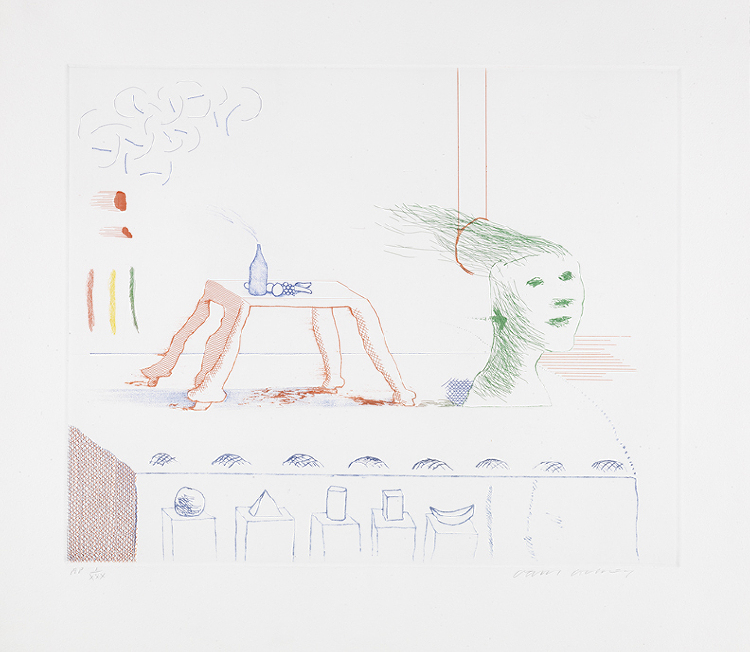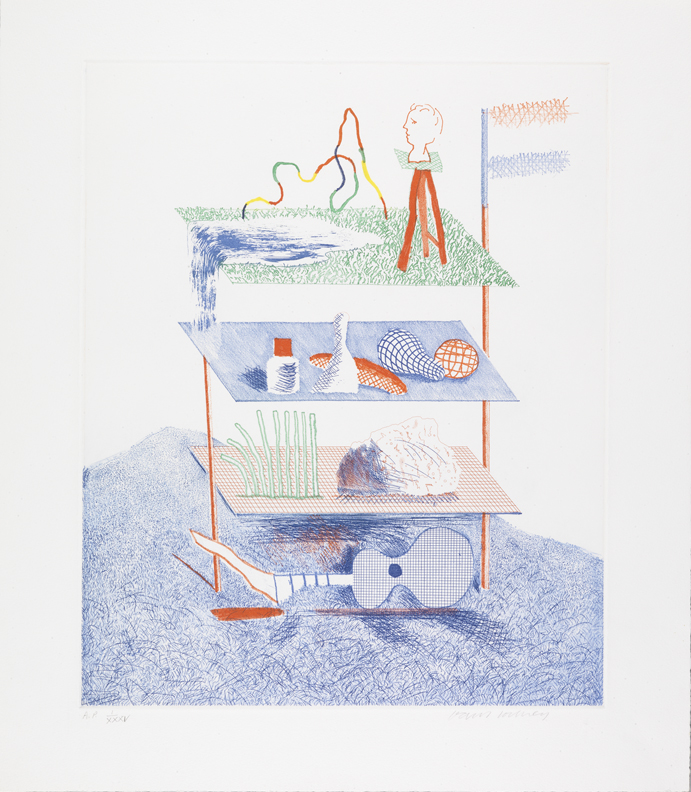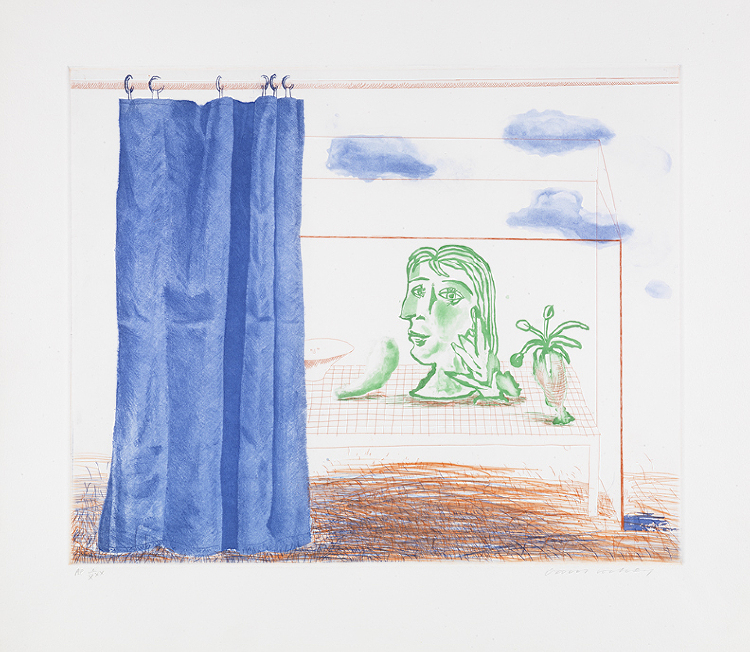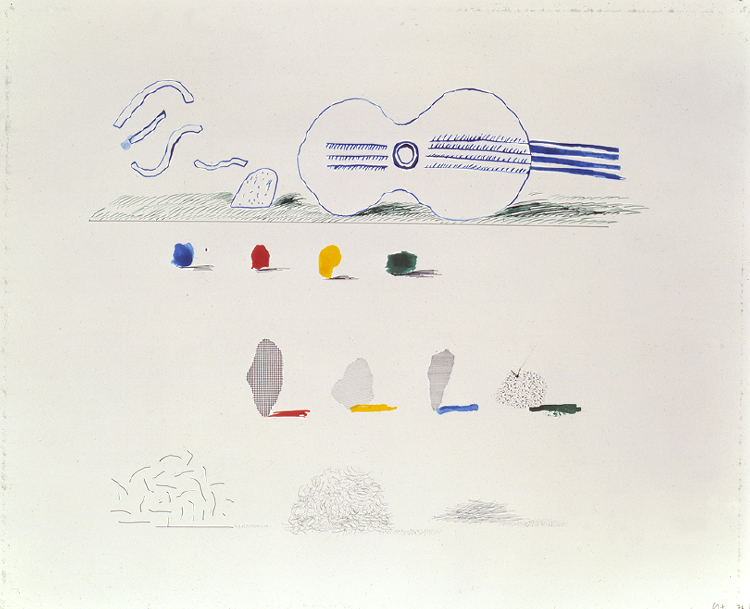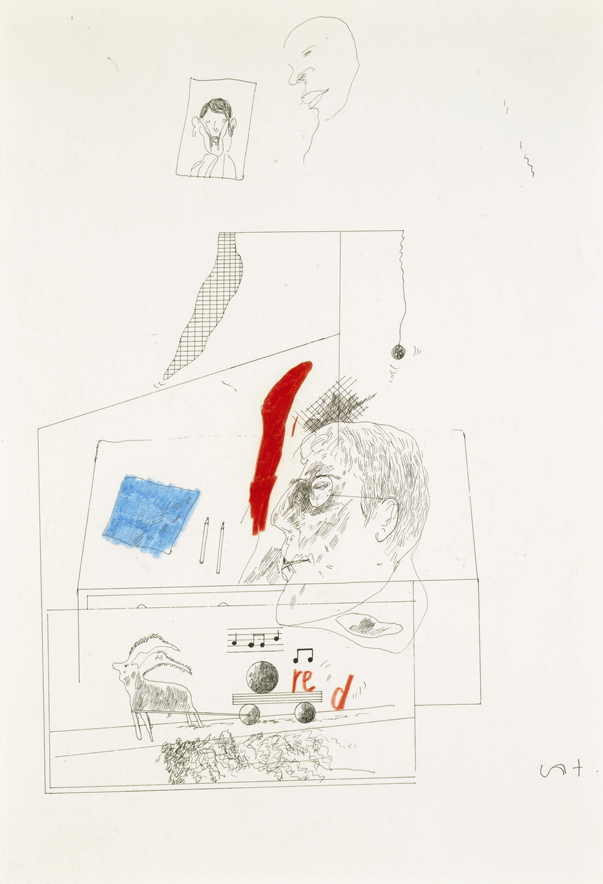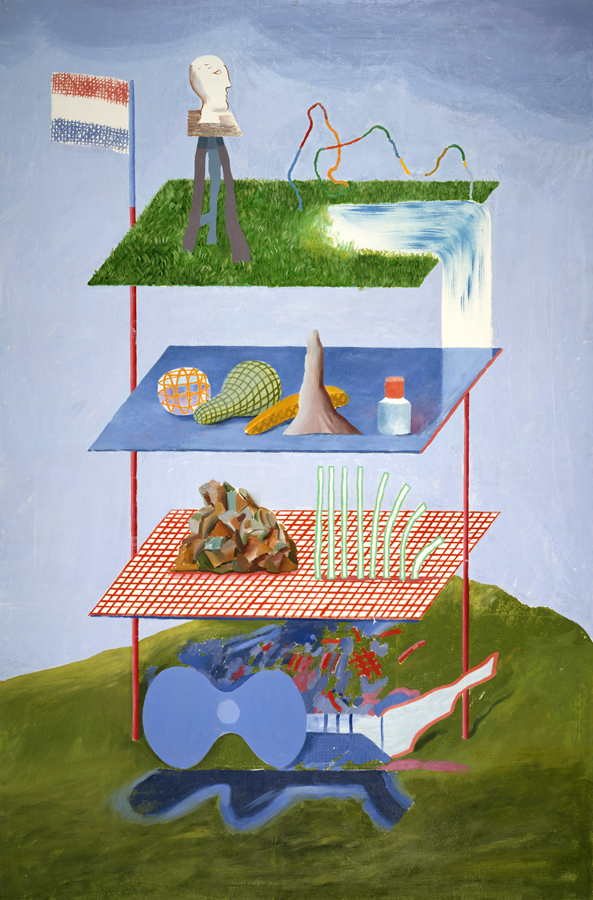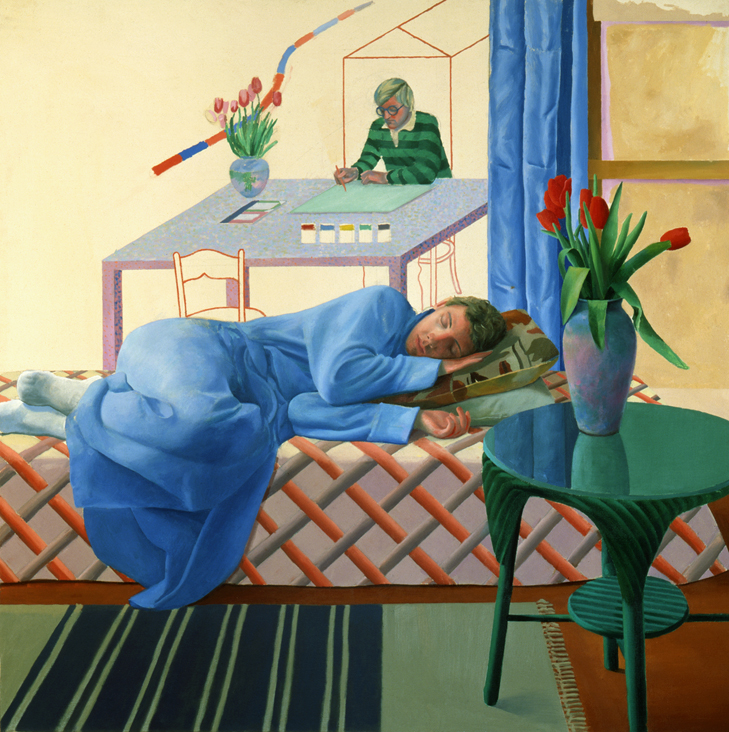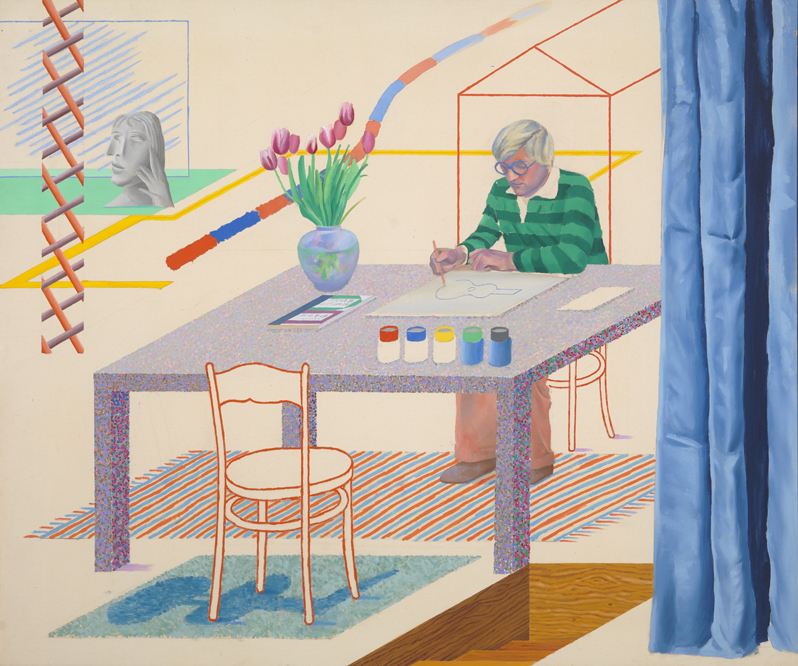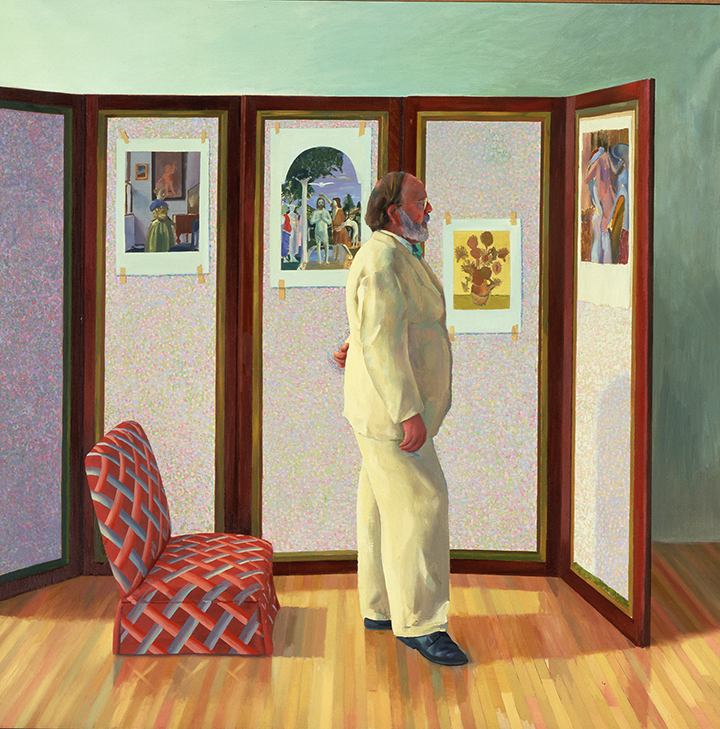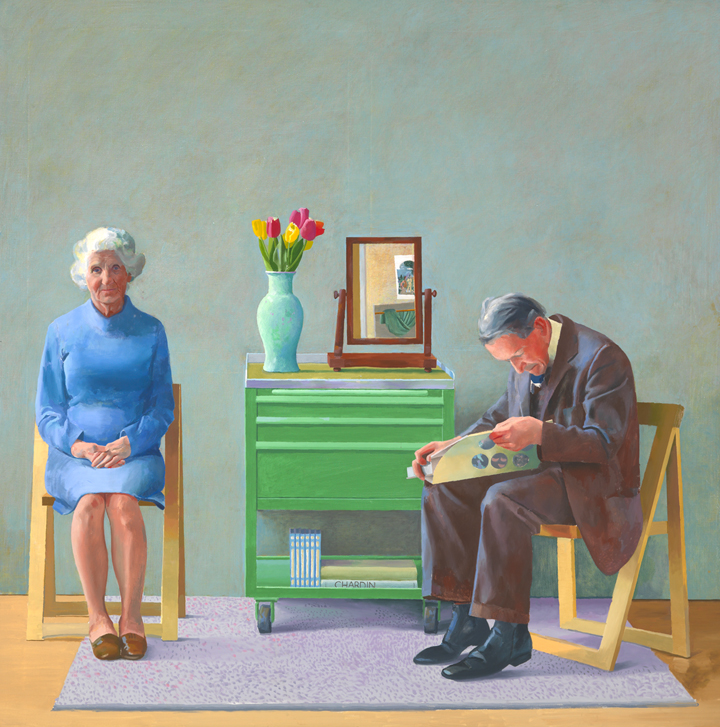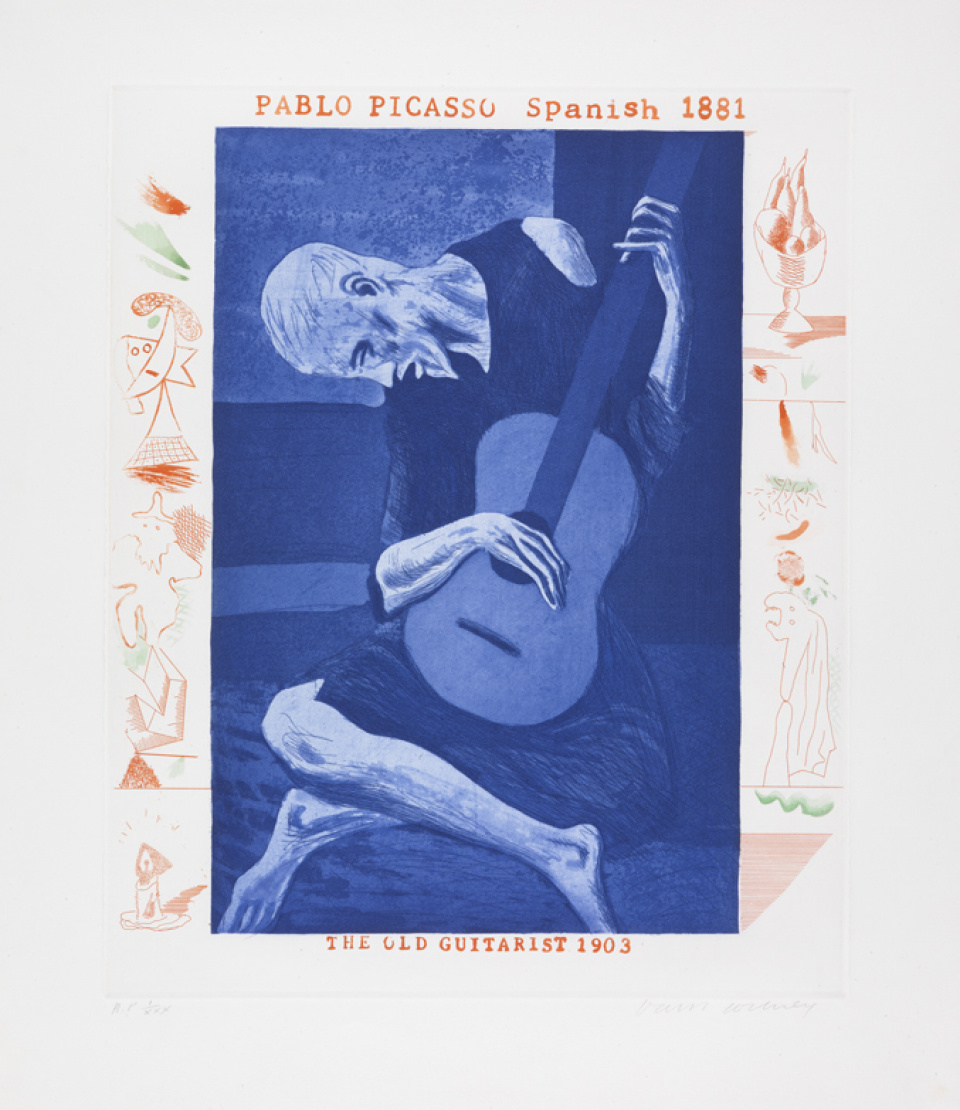
The Man with the Blue Guitar
Hockney continues to work on images to accompany the book-length poem, The Man with the Blue Guitar (1937), by modernist poet Wallace Stevens (American, 1879–1955), recommended to him by Henry Geldzahler on Fire Island the previous summer. After a series of ink drawings, Hockney progresses [NESTED]into colored etchings, a technique he learned in Paris working with Aldo Crommelynck, Pablo Picasso’s printer; Hockney this time collaborates with Maurice Payne at Petersburg Press. They are published as The Blue Guitar: Etchings by David Hockney, who was inspired by Wallace Stevens, who was inspired by Pablo Picasso, both as a print portfolio and a book.
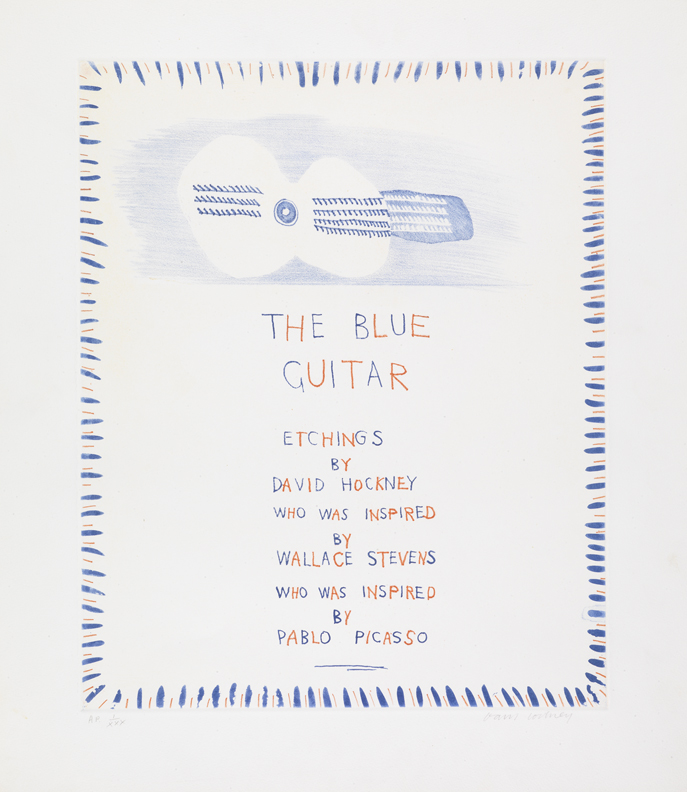
When I first read The Man with the Blue Guitar, I wasn’t quite sure what it was about, like all poems like that, but I loved the rhythms in it and some of the imagery, just the choice of words is marvelous. Then, when I read it out loud, I loved it even more, because I got the music that it has.
The etchings themselves weren’t conceived as literal illustrations of the poem, but as an interpretation of its themes in visual terms. Like the poem, they’re about the transformations within art as well as the relation between reality and the imagination, so there are pictures within pictures and different styles of representation.
Paintings of paintings
Stevens’s meditation on Picasso’s painting The Old Guitarist (1903–04) leads Hockney to paint additional reflections in his London painting studio, resulting in Model with Unfinished Self Portrait, which shows Gregory Evans lying asleep in front of Self Portrait with Blue Guitar.
My self portrait, which was not finished at the time, was leaning against the wall of my London studio. Gregory posed on a bed in front of it and a great deal of his figure was painted from life. That gave it a kind of power. It looks as though it’s a painting of two completely different kinds of space. It seems as if there’s a stage behind Gregory with a curtain. The curtain has been pulled back and there I am, about to draw a guitar.
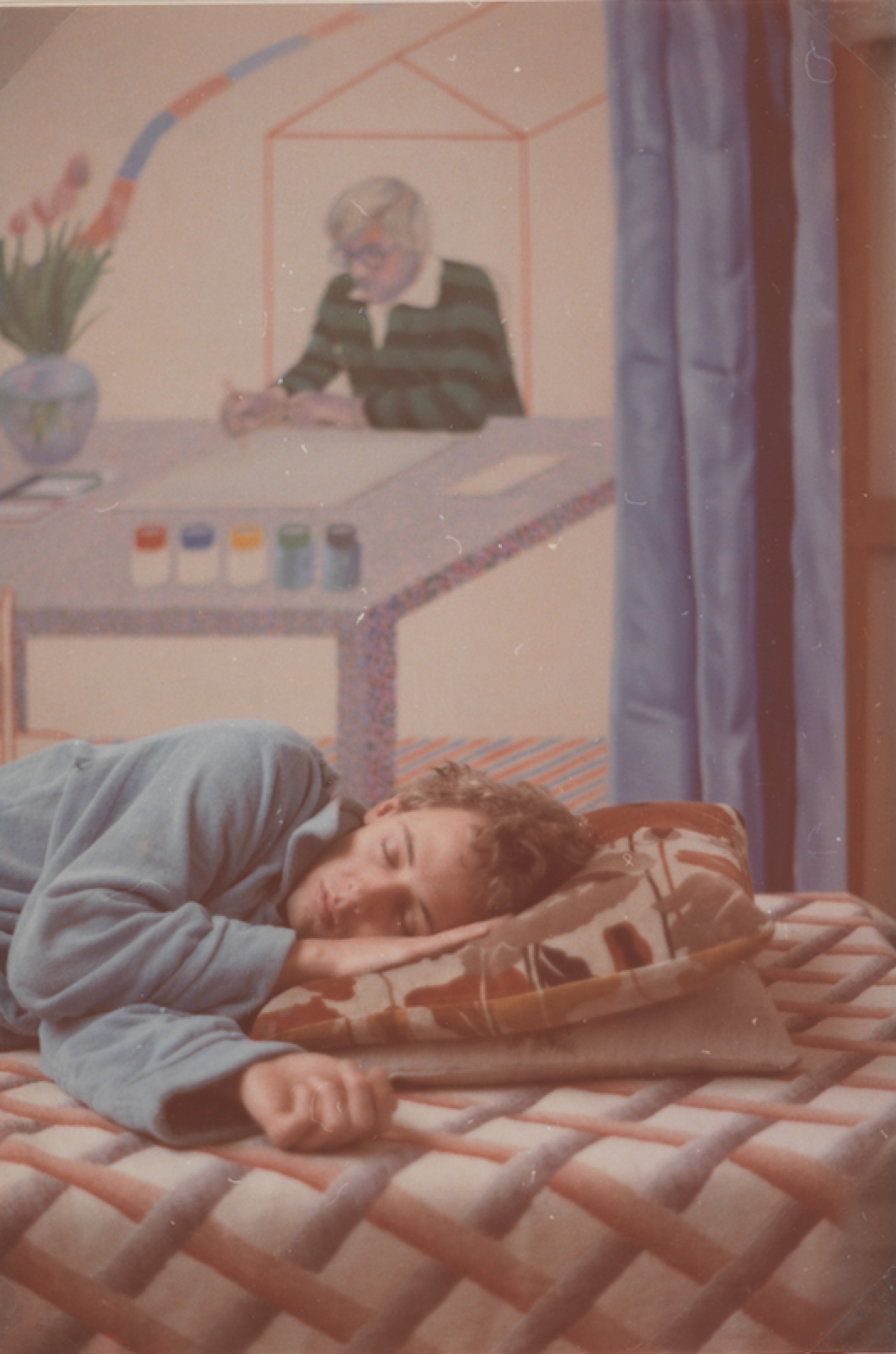
Looking at Pictures on a Screen
Hockney’s paintings of paintings are crescendoing in 1977. Looking at Pictures on a Screen features Henry Geldzahler peering at reproductions, hung on a folding screen, [NESTED]of masterpieces from the National Gallery, London.


Return to Powis Terrace
He is painting again at his old residence at Powis Terrace, in a more spacious studio he has recently built out to better accommodate his all-consuming artistic practice and social life. He is able to complete My [NESTED]Parents, absenting himself from this second take on My Parents and Myself begun in 1975 and painted over in 1976. In the Observer, William Feaver writes: “Mannered though this painting may be, it is neither jokey nor sub-Ingres, but devoted and altogether fine.”
My father could go to the hospital every day for a few hours, but he wasn’t used to sitting and talking to her for a few hours every day at home. He would be doing something, my mother would be doing something else. It was then I noticed that people communicate in other ways, it’s not just talking, especially people who know each other well. They’d been married 45 years, and if you’ve been living with somebody for 45 years, you know a lot about the face, the little actions, what they mean …. I decided there was a subject there I somehow wanted to try to deal with.
Nude on the New Review
Hockney is earning gleeful notoriety from his preeminence as a figurative painter: he poses in the nude with R. B. Kitaj for the cover of the January/February [NESTED]issue of the New Review, wherein the pair speak on behalf of a focus on the figure and eschew academicism in art.
Remember this: it is always figures that look at pictures. It’s nothing else. There’s always a little mirror there. On every canvas there’s a little bit of mirror somewhere.

Exhibitions
Solo
- David Hockney: Portraits, Nishimura Gallery, Tokyo, Japan (Feb 12–Mar 12); catalogue.
- Zeichnungen und Druckgraphik, Staatliche Graphische Sammlung, Munich, Germany (Feb 24–Apr 17); catalogue.
- Paintings and Drawings, 1961–1975, Galerie Neuendorf, Hamburg, Germany (Apr 21–May 20).
- New Paintings, Drawings and Graphics, André Emmerich Gallery, New York, NY, USA (Oct 29–Nov 16); catalogue.
Group
- Kunst um 1970 (Art around 1970): Die Sammlung Ludwig Aachen, Künstlerhaus Wien, Vienna, Austria (Mar 8–Jun 12); catalogue.
- Contemporary British Prints, Richard Gray Gallery, Chicago, IL, USA (Jun 25–Jul 25).
Publications
Publications
- Contemporary Drawing, 1977 Perth International Survey of Drawing, Western Australian Art Gallery, Perth, Australia.
- David Hockney Portraits, Nishimura Gallery, Tokyo.
- David Hockney Zeichnungen und Druckgraphik Austellung, Staatliche Graphische Sammlung München, Munich, Germany.
- David Hockney: Gravura E Desenho, Fundação Calouste Gulbenkian, Lisbon, Portugal.
- Hayward Annual, Current British Art, by Michael Compton, Howard Hodgkin & William Turnbull, London.
- Artists at The Curwen, by Pat Gilmour, London: Tate Gallery Publications.
- David Hockney: New Paintings, Drawings and Graphics, by David Hockney, New York.
- The Blue Guitar: Etchings by David Hockney, by Wallace Stevens, London: Petersburg Press.
